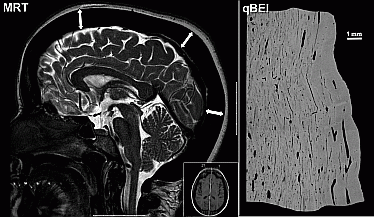ICCBH2015 Poster Presentations (1) (201 abstracts)
LRP5-associated high bone mass disorder: novel familial mutation in LRP5 and investigation of bone mineralization density distribution (BMDD)
Katharina M Roetzer 1, , Goekhan Uyanik 1 , Attila Brehm 3 , Jochen Zwerina 2, , Shahin Zandieh 2, , Thomas Czech 5 , Paul Roschger 2 & Klaus Klaushofer 2,
1Center for Medical Genetics, Hanusch Hospital, Vienna, Austria; 2Ludwig Boltzmann Institute of Osteology at the Hanusch Hospital of WGKK and AUVA Trauma Centre Meidling, First Medical Department, Hanusch Hospital, Vienna, Austria; 3First Medical Department, Hanusch Hospital, Vienna, Austria; 4Institute of Radiology and Nuclear Medicine, Hanusch Hospital, Vienna, Austria; 5Department of Neurosurgery, Medical University of Vienna, Vienna, Austria.
Mutations in LRP5 cause a variety of phenotypes, including high bone mass and low bone mass disorders. In patients with high bone mass, different heterozygous mutations have been described, all of them clustering in a region including the binding pocket for DKK1 and sclerostin. The pathogenic mechanism is thought to be a gain-of-function mediated by an impaired inhibition of the canonical Wnt signalling pathway, thereby leading to increased bone modelling.
We report on two affected family members, a mother and her daughter, exhibiting high bone mass (T-scores L-spine 11.4 S.D., femur 10.5 S.D.), increased calvarial thickness (Figure 1), and thickened cortices of the long bones, without fracturing. The mother did not report any symptoms while the daughter had congenital hearing impairment with subsequent cochlear implantation, recurrent facial palsy, and migraine. In addition, there was stenosis of the foramen magnum present in the daughter.
In both individuals, we detected a novel heterozygous in-frame insertion of two amino acids in the LRP5 gene, very likely associated with a gain-of-function. In the daughter, part of the occipital squama was surgically removed and the bone sample was used for Bone Mineralization Density Distribution (BMDD) determination by quantitative Backscattered Electron Imaging (qBEI) (Figure 1). The bone sample consisted of two different regions: one region without bone remodelling, lower and less heterogeneous bone matrix mineralization, and another region with osteonal remodelling, increased and a more heterogeneous mineralization. The higher mineralization is reflecting a higher average tissue age.
In summary, we present a novel LRP5 mutation associated with high bone mass in two related individuals. Furthermore, we show qBEI data of an occipital bone sample, exhibiting two different regions of bone remodelling and mineralization.
Disclosure: The authors declared no competing interests.

Figure 1 Cranial MRT (left) and qBEI of occipital squama (right).
 }
}



